Putting Cinematic Technique into Your Pages via Movie Analysis
Learning to write cinenatically is essential for fiction writers. By now you should know all about “show, don’t tell.”
But just because you can picture your scene playing out in your head, it doesn’t mean you can translate it effectively on the page. If you’re going to try to write like a filmmaker, you need to borrow from the film industry. And that means sticking a bunch of camera shots in your writer’s toolbox.
Let me demonstrate how to do this.
Jot ‘Em Down
Pay attention the next time you watch a movie. Get out a pad and pen if you really want to do this right, and note each segment of a scene. See if you can roughly guess what camera shot is being used and see if you can keep up with them all.
If you’re watching a slow-moving poignant scene that is mostly intimate conversation, you may have few shots listed, moving from Close-up to Extreme Close-up to a Two Shot or Full Shot. You may see a brief Insert or Angle On something, but there won’t be all that many shots in the scene.
However, try notating the shots in a movie like Die Hard or another action movie. In just a minute or two, you might have dozens of segments, all different angles and types of shots, that have been edited together to create one scene. The point is: your job is to now create those segments that string together. And once you see how simple it can be (and rather intuitive) by taking a look at some examples, you might just get excited!
Let’s Take a Look at Some Novel Scenes
Here’s the opening scene from Lisa Gardner’s thriller Alone. She uses cinematic technique throughout, adeptly choosing just the right camera shot to grab us and take us for a dynamically visual ride. Right away we get in her character’s head and see what he sees, notice what he notices. His internal camera is one, seeing images in his head as the scene plays out.
I’ll put in brackets the camera shots she uses to help you identify them.
He’d put in a fifteen-hour shift the night the call came in. Too many impatient drivers on 93, leading to too much crash, bang, boom. City was like that this time of year. The trees were bare, night coming on quick and the holidays looming. It felt raw outside. After the easy camaraderie of summer barbecues, you now walked alone through city streets hearing nothing but the skeletal rattle of dry eaves skittering across cold pavement. [Establishing Shot]
Lots of cops complained about the short, gray days of February, but personally, Bobby Dodge had never cared for November. Today did nothing to change his mind.
His shift started with a minor fender bender, followed by two more rear-enders from northbound gawkers. Four hours of paperwork later, he thought he’d gotten through the worst of it. [Montage] Then, is early afternoon, when traffic should’ve been a breeze even on the notoriously jam-packed 93, came a five-car pile-up as a speeding taxi driver tried to change four lanes at once and a stressed-out ad exec in a Hummer forcefully cut him off. The Hummer took the hit like a heavyweight champ. The rusted-out cab went down for the count and took out three other cars with it. Bobby got to call four wreckers, then diagram the accident, and then arrest the ad exec when it became clear the man had mixed in a few martinis with his power lunch . . . [Series of Shots]
The man grabbed the doorjamb with his right hand. He swung his lumbering body backwards, expecting to bowl over his smaller escort and what? [Close-up] Make a run for it through a police barracks swarming with armed troopers? Bobby ducked left, struck out his foot, and watched the overweight executive slam to the floor. [Two Shot] The man landed with an impressive crash and a few troopers paused long enough to clap their hands at the free show. [Full Shot]
After playing out some of the dialog between the drunken exec and her protagonist, Gardner had Bobby head to the local bar, thinking he’s done with work for the night. We see a Full Shot in which he’s sitting with his buddies watching news on the mounted TV screen, which shows a hostage situation developing and the SWAT team coming in. Bobby’s beeper then goes off, which sends him bolting out the door.
By using the various camera shots to give a feel for Bobby’s work and the kind of day he’s had, Gardener brings the scene to life. She focuses on just a few things in the three scant pages of her opening scene, but it tells us a lot about her protagonist by showing him in action and seeing what he sees—not just around him but what’s playing in his head. He thinks about the crazy events of the day, using a Montage and Series of Shots. And we watch one piece of that day played up more up close and personal. The variety of shots helps with interest, pacing, and tension.
In the next chapter, we see Bobby now heading toward that hostage situation and realize he’s been appointed the sniper-shooter. Watch as Gardner has the camera PAN and Follow him through the streets of Boston:
Roaring through the streets of Boston, he squealed his tires taking a hard right up Park Street, heading for the golden-domed State House, then threw his cruiser left onto Beacon, flying past the Common and the Public Garden. At the last minute, he almost blew it—tried to head up Arlington straight for Marlborough, then realized that Marlborough was one way the wrong way. Like any good Masshole driver, he slammed on his brakes, cranked the wheel hard, and laid on his horn as he sliced across three lanes of traffic to stay of Beacon. Now his life was tougher, trying to pick up the right cross street to head up to Marlborough. In the end, he simply drove toward the while glow of floodlights and the flashing red lights of the Advanced Life Support ambulance.
Arriving at the corner of Marlborough and Gloucester, Bobby processed many details at once. Blue sawhorses and Boston PD cruisers already isolated one tiny block in the heart of Back Bay. [Long Shot] Yellow crime-scene tape festooned several brownstone houses, and uniformed officers were taking up position on the corners. The ALS ambulance was now on-scene; so were several vans from the local media. [PAN to see all this]
Things were definitely starting to rock and roll.
Bobby double-parked his Crown Vic just outside a blue sawhorse, jumped out the door, and jogged around to his trunk. [Follow] Inside he had everything a well-trained police sniper might need for a party. Rifle scope ammo, black BDUs, urban came BDUs, ghillie hood, body armor, changes of clothing, snacks, water, a bean bag, night-vision goggles, binoculars, range finder, face paint, Swiss Army knife, and flashlight. [Close-up]
After Bobby assesses the situation, gears up, and finds the ideal place to set up his position, he approaches the old brownstone building and finds a man there who refused to head the evacuation order. In a Two Shot, we watch Bobby talk to the man and ask how to get to the top floor, and the man happily shows him the way.
His gaze Pans the room, taking in the furnishings, then setting up his equipment and weapons. Using binoculars, he Angles On the suspect he’s been told to single out, then positions his rifle and looks through the crosshairs at his target.
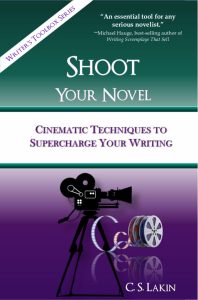 After some time, the suspect moves, and Bobby’s “camera” Finds and Zooms in on a woman kneeling by the bed and a small child. It’s a Long Shot, and he can’t see much detail from where he sits. Through the scope he Zooms in and Zooms out, and he can tell the man’s yelling but in this Long Shot, he’s too far away to hear anything. But once he can tell the child’s out of the way, and the man is about to pull the trigger on the handgun he’s holding to his wife’s head [Angle On the finger on the trigger], Bobby does what he came to do. He shoots.
After some time, the suspect moves, and Bobby’s “camera” Finds and Zooms in on a woman kneeling by the bed and a small child. It’s a Long Shot, and he can’t see much detail from where he sits. Through the scope he Zooms in and Zooms out, and he can tell the man’s yelling but in this Long Shot, he’s too far away to hear anything. But once he can tell the child’s out of the way, and the man is about to pull the trigger on the handgun he’s holding to his wife’s head [Angle On the finger on the trigger], Bobby does what he came to do. He shoots.
Were you able to see all that? She doesn’t use a hundred complex shots but just the right ones needed at the right time to get the reader to pay attention to the details she wants noticed. We are so used to seeing movies and have an inherent understanding of what certain shots signify. We know if something is shown close up, it’s important (the Hitchcock Rule). I hope this example is giving you some ideas for your novel.
This week, watch one movie and try to write down the different shots you notice. Don’t worry about getting ultra-specific, like determining if it’s a Medium Close-up or A Medium Wide Shot. Just try to feel the flow of shots and see how the segments have been edited together for best effect.
If you watch a movie with really boring scenes, see if you can analyze those shots and think how the use of other shots may have helped the scene (if possible!). Then find a scene in a novel that has some great camera shots, and if you feel inclined, share a paragraph or two in the comments.
Want to learn more about integrating cinematic technique into your fiction? Shoot Your Novel is a unique book that delves deep into camera shots and filmmaking technique that fiction writers can draw from. Get your copy HERE!
Featured Photo by Daniel Fazio on Unsplash

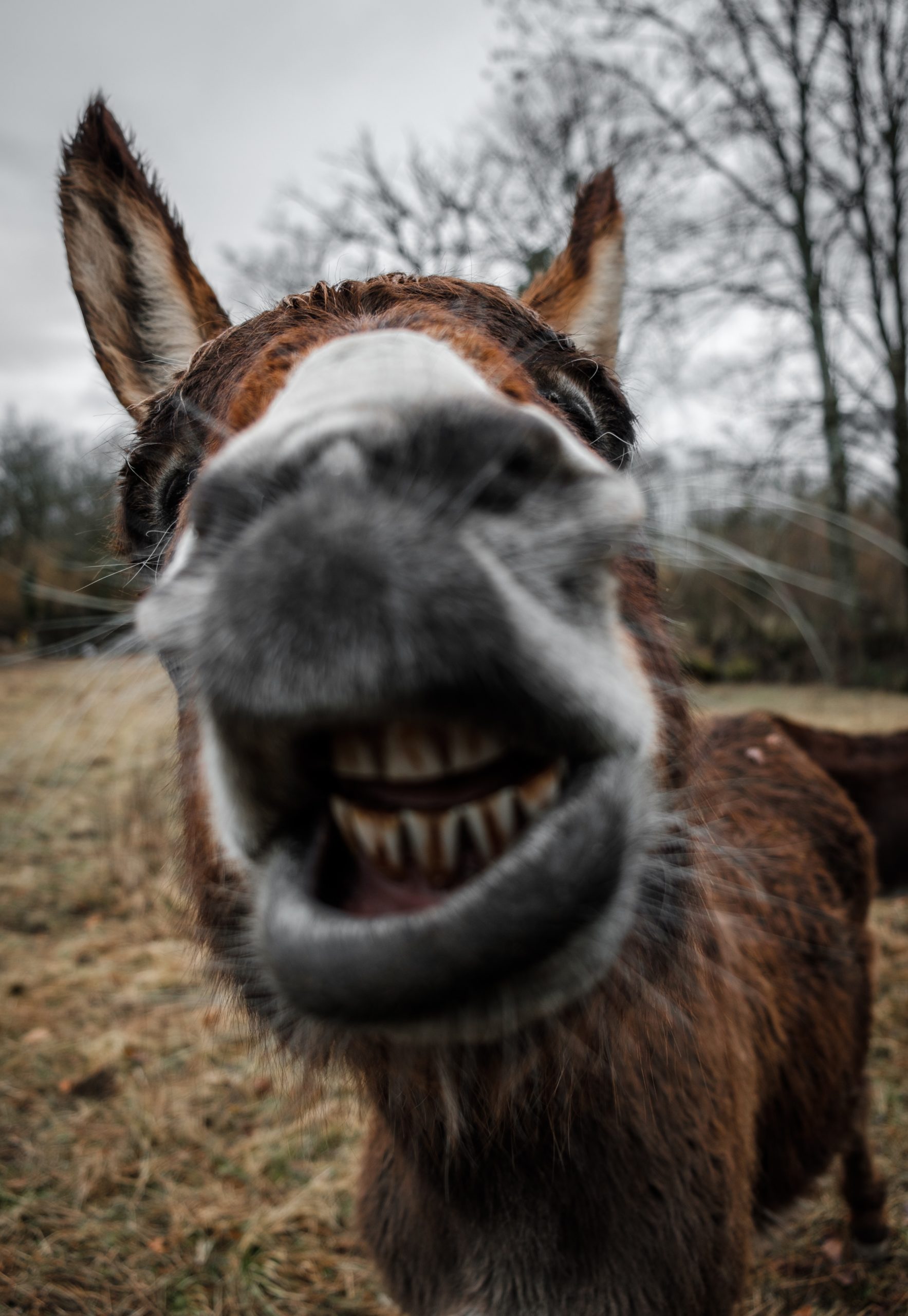
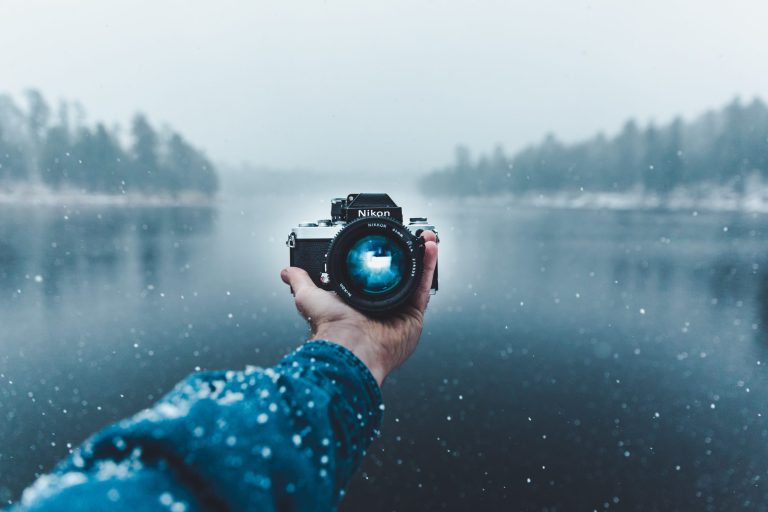
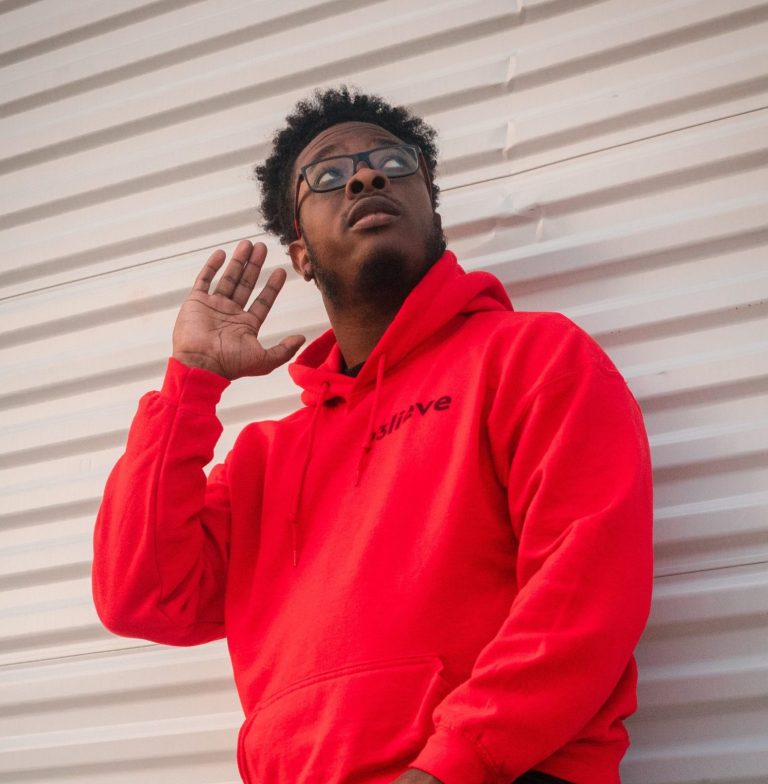
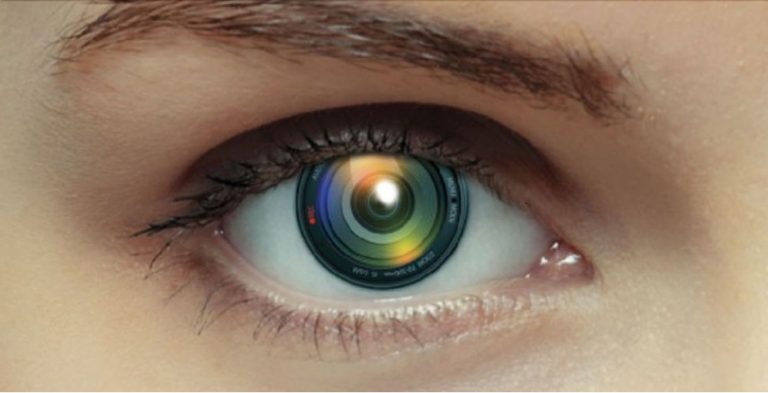
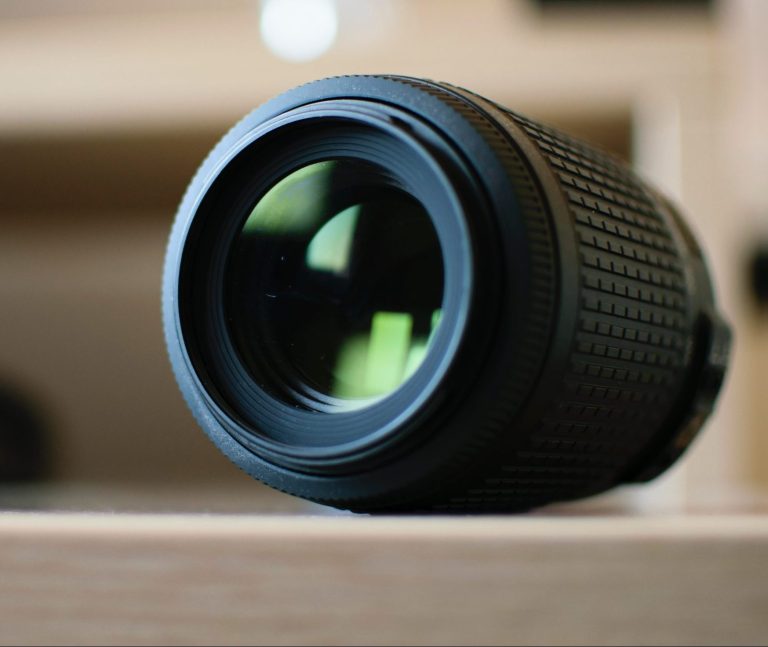
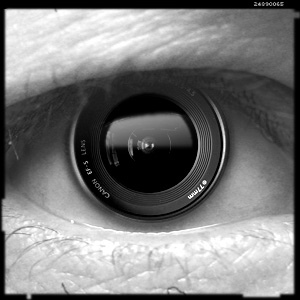




You’re right, we can learn allot from screenwriters. You can also buy scripts and see how they write their descriptions. Writers can go on for pages if need be, but screenwriters have a time constraint, so they have to be stingy with their words. They know how to describe some very elaborate scenes with VERY FEW words. I have learned a lot from screenwriters.Oh, and I have your book “Shoot your Novel.” I have many of your books, which I use frequently, 12 flaws, 12 pillars, and writing the heart of story. Thanks for paying your substantial knowledge forward. Jim W